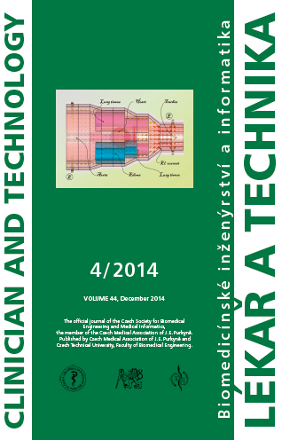DIFFERENCES IN SLEEP PATTERNS AMONG HEALTHY SLEEPERS AND PATIENTS AFTER STROKE
Keywords:
sleep patterns, stroke, probabilistic sleep model, functional principal components analysisAbstract
Sleep deprivation, whether from disorder or lifestyle, whether acute or chronic, poses a significant risk in daytime cognitive performance, excessive somnolence, impaired attention or decreased level of motor abilities. Ischemic stroke resulting in cerebral lesions is a well-known acute disorder that leaves affected patients strongly vulnerable to sleep disturbances that often lead to the above-mentioned cognitive and attentional impairments. In this paper, we analyzed and compared sleep patterns of healthy sleepers and patients after stroke. To overcome the well-known limits of the standardized sleep scoring into several discrete sleep stages we employed the recently proposed probabilistic sleepmodel that represents the sleep process as a continuum in terms of a set of probability curves. The probability curves were considered to represent a form of functional data, and microstructure along with time dynamics of the curves were studied using functional principal components analysis and clustering. Although our study represents a preliminary attempt to separate the two groups of subjects, we were able to identify several physiologically separate sleep patterns and we also identified sleep microstate patterns being a potential source allowing the discrimination of healthy subjects and stroke patients.
Downloads
Published
Issue
Section
License
Copyright (c) 2017 Bui Thi Mai Phuong, Roman Rosipal

This work is licensed under a Creative Commons Attribution 4.0 International License.
Authors who publish with this journal agree to the following terms:
- Authors retain copyright and grant the journal right of the first publication with the work simultaneously licensed under a Creative Commons Attribution License (https://creativecommons.org/licenses/by/4.0/) that allows others to share the work with an acknowledgment of the work's authorship and initial publication in CTJ.
- Authors are able to enter into separate, additional contractual arrangements for the non-exclusive distribution of the journal’s published version of the work (e.g., post it to an institutional repository or publish it in a book), with an acknowledgment of its initial publication in this journal.
- Authors are permitted and encouraged to post their work online (e.g., in institutional repositories or on their website or ResearchGate) prior to and during the submission process, as it can lead to productive exchanges.
CTJ requires that all of the content of the manuscript has been created by its respective authors or that permission to use a copyrighted material has been obtained by the authors before submitting the manuscript to CTJ. CTJ requires that authors have not used any copyrighted material illegally, as for example a picture from another journal or book, a photo, etc. It is the author’s responsibility to use only materials not violating the copyright law. When in doubt, CTJ may ask the authors to supply the pertinent permission or agreement about the use of a copyrighted material.
The opinions expressed in CTJ articles are those of authors and do not necessarily reflect the views of the publishers or the Czech Society for Biomedical Engineering and Medical Informatics.


